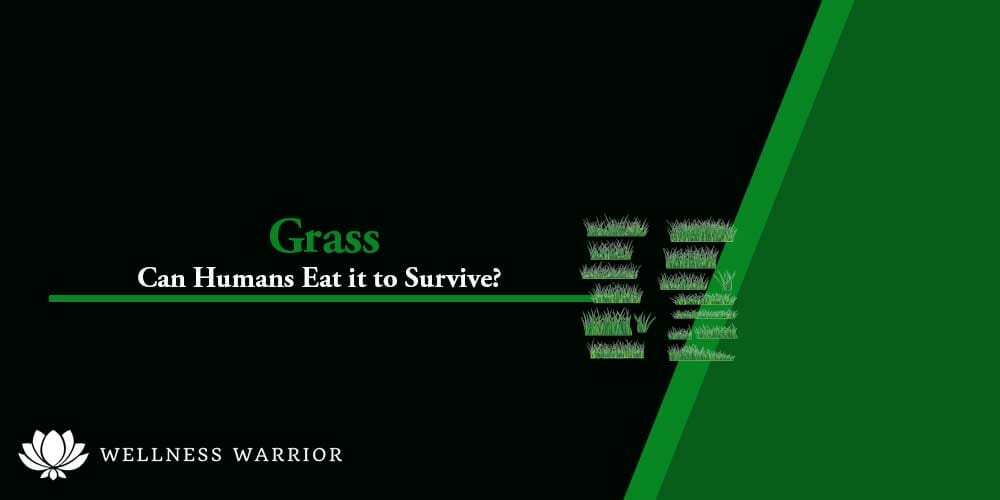What would you do if you’ve been stuck in the wilderness without food or water?
Would you consider snacking on edible grass?
According to a study from the University of Utah, grasses are non-toxic, and human ancestors have added them to their diet for millions of years!
Many species of grass are abundant everywhere you go, and in this article, you will learn about the sustainable and edible grasses you can eat in the wild.
Can Humans Eat & Digest Grass
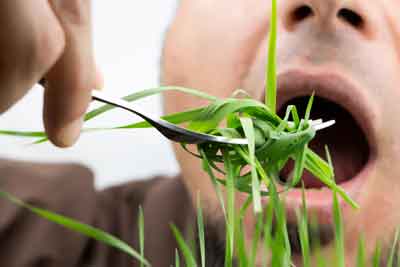
Generally, the grass is edible and can be considered a food source in case of misfortunes.
However, take note that not all grasses are safe to be eaten.
Depending on the types, a human body can digest grass of certain species alone.
1) Wheat Grass
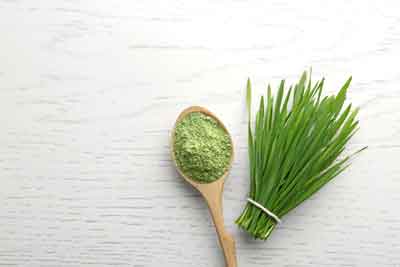
Usually found in northern temperate zones, wheatgrass is one of the wild grasses you can eat in case of a survival situation.
It is safe to eat even if it is raw grass.
According to a study in India, although wheatgrass contains few calories, it is rich in vitamins, minerals, and protein.
Additionally, wheatgrass contains enzymes that can help your stomach digest grass!
In another study published in the Journal of Food Science, wheatgrass can provide you with some energy.
So, during your survival situation, having it does not only relieve your hunger healthily but keeps you going as well.
2) Ryegrass
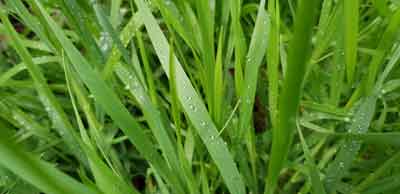
The pollen of ryegrass is considered edible grass, and safe to be eaten by both animals and humans.
One great thing about this plant is that it is good to taste and contains the characteristics of wheatgrass.
According to a study in Latvia, ryegrass is one of the sustainable foods a human can consider in case of emergency.
3) Kentucky Bluegrass & Alfalfa Grass

These grasses are cool-season lawn grasses and they continually grow during cool seasons in Europe and North Asia.
They are also good to the taste and have a nutritional value and this makes them great options during survival.
4) Barley Grass & Bristle Grass
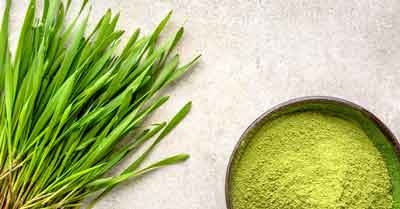
Barley has been widely known as one of the nutritious plants that are usually formulated in a powder form to make juices.
But did you know that eating raw grass is also a smart move during survival?
According to a study in China, barley and bristle grass have functional ingredients that promote overall human health.
They come with antidepressant properties which are needed for you in times of disaster.
Of course, who wouldn’t be depressed when you are lost and alone in the wilderness?
Grass Diet Issues
If you are starving in the middle of the wild and you have no choice left but to eat grass, you may do so.
However, take note that if green (aside from the possible sources listed above) is consumed by a human, some problems might occur.
Most people who ate these grasses millions of years ago may have experienced little or no side effects at all, but everything changes, you know?
1) Human Digestive System Problems
A plant contains lots of fibers and cellulose, and sometimes, lignin.
And as humans or omnivores, we do not have the proper digestion facility like the herbivores or grazing animals such as deer who have high acid content in their stomachs.
We do not have specialized digestive systems to digest, absorb, and break down these compounds especially when they are raw leaves and grasses.
In other words, they may cause us to vomit and experience other side effects.
2) Mastication Issues
Moving on to the next issue, mastication.
A green contains lots of silica and this compound is an abrasive substance that can wear down human teeth in no time.
Unlike humans, grazing animals (or grass-eating animals like cows) have different teeth structures and are made for eating and chewing grass.
Grass Abundance and Sustainability
As we all know, we, humans, can survive without food and water for 40 days and 3 days, respectively, depending on our health condition.
And, there are times when people eat grass because of no other choices.
However, understand that green can temporarily stuff us but cannot give us enough sustenance in the long run.
This means that green does not provide the nutritional value humans need to survive in the wild.
They may contain a large amount of these nutrients and minerals (calcium, iron, potassium, and vitamins) but these are too little for us to be sustained.
Also, it has little or no fat content.
Thus, when we do not consume foods with fat, we do not have something in our body that can be used to transport the other nutrients we take.
Alternatives
If you are in the wilderness and you are offered other food sources aside from grass, this is good news for you!
You can consider alternatives such as dandelions and wild strawberries which have nutrition.
Nettles and lambs quarters, known by weed gardeners, are also fine but they might cause skin irritations as they have these sharp, tiny hairs.
Green Parts to Eat
Okay, say that you have no choice but to eat grass, what would be the parts of the green you can snack on aside from the leaf itself?
Of course, you can’t just pick up something and put it in your mouth because the ones you might eat are poisonous and this could kill you!
1) Stem
If you are left in the wilderness with only green to eat, you must find the newest stem of the grass.
Then, suck on the juice left on the bottom of the leaves or grass blades.
2) Seeds
In case you see some grasses in the wild that come with seeds, you can harvest their roots.
When you get back to your camping tent, you can crush these seeds and do a cooking grass activity by putting them to boil.
Then, add the green and use the cooked mixture as your hot tea!
To know which cooking and survival tools to bring whenever on a wild trip, check out this article about top must-have survival tools and survival foods.
Final Thoughts
Although green may not provide your body with all the nutrition it needs, snacking on them can temporarily relieve your hunger while finding your way back home from the wilderness.
Also, take note that there are also species of green that are safe to be consumed such as wheatgrass and ryegrass.
However, not all of these may be present in the location you wish to go and when other species are consumed, there might be some issues.
But, if it’s a way to survive, why not consider it?
Frequently Asked Questions (FAQs)
Can human stomachs digest grass?
Depending on the grass species, your stomach may digest grass. However, if the grass contains lots of cellulose and fibers, it might take time for your stomach to digest it. Thus, enzyme supplements are needed to aid in these digestion issues.
Will eating grass cause death?
Technically, eating grass is not dangerous and fatal, especially when only small amounts of grass were consumed. However, when the grass you consumed contains poisons, you should need immediate medical care to stay on the safe side.
What will happen to my stomach when I eat grass?
If you have a sensitive stomach, you might experience gastrointestinal disturbances such as vomit and diarrhea. However, if you are lucky, the grass would just pass through your system normally, causing no adverse effects.
